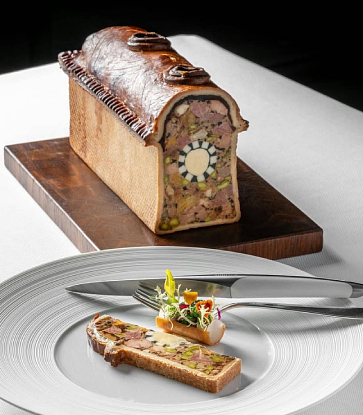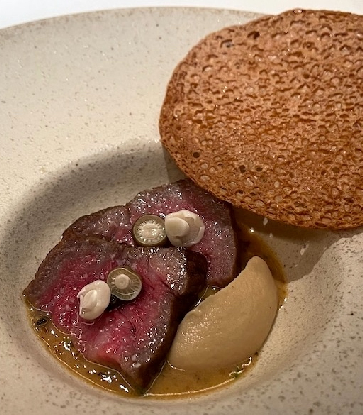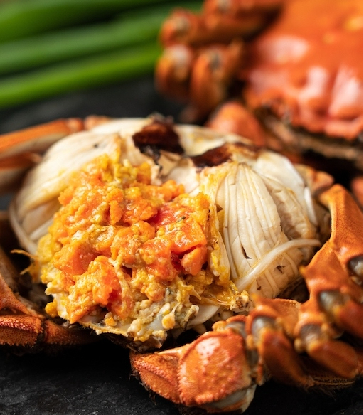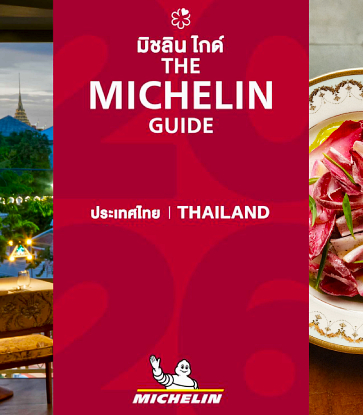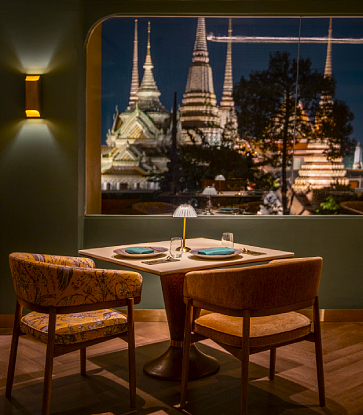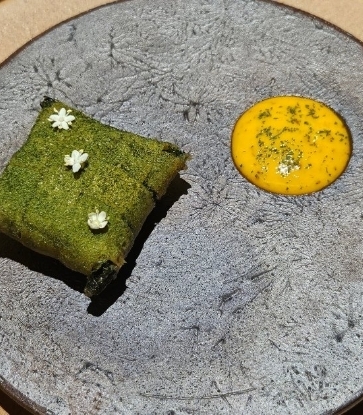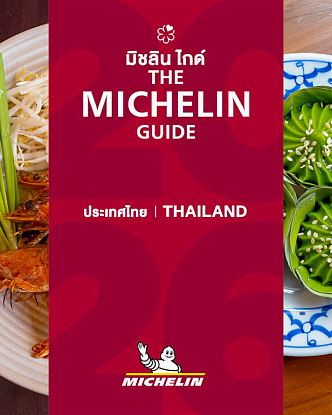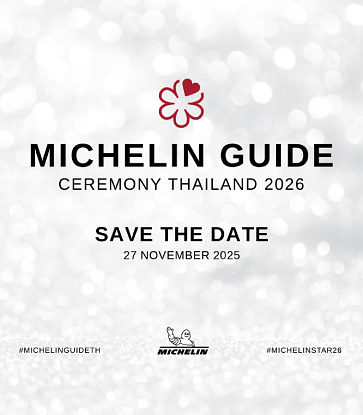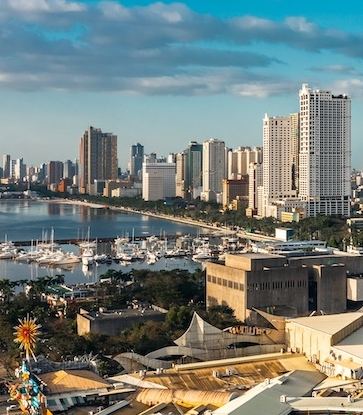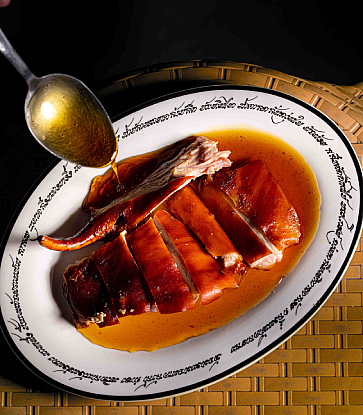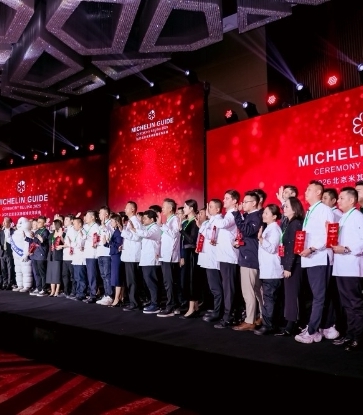When you think of Thai food, Massaman curry, Tom Yam, or Som Tam may come to mind. However, delving deeper into the essence of Thai cuisine, Thai cuisine is more than that - a lot more. One couple explores the relationship between a Thai meal set consisting of rice and dishes eaten with rice, known as "samrap."
It started as a humble post-work chef gathering among peers. Now the humble spot has become a MICHELIN Star restaurant. At Samrub Samrub Thai, the team invites you to experience Thai culture through beautifully crafted seasonal set menus with a chef's counter that blurs the line between kitchen and guests, and revives ancient Thai recipes, bringing them back to life in the present world.
Led by Chef Prin Polsuk, a Chiang Mai native who began his culinary journey as a Thai chef at the renowned Thai restaurant of the Mandarin Oriental Bangkok. He then became an apprentice of David Thompson at Nahm restaurant in London, honing his skills until he became a master-disciple. Finally, he returned to Thailand to work as the head chef at Nahm Bangkok at COMO Metropolitan Bangkok Hotel. He then ventured out to create his own project, and Samrub Samrub Thai was born.

From samrub for friends to Samrub Samrub Thai
The origins of Samrub Samrub Thai trace back to 2015, at the Soy Sauce Factory, where it began as an unofficial post-work hangout for chefs. "It was all just for fun in the beginning, a social hub of sorts. After a long day's work, everyone would gather here to cook, and mix cocktails, all within the confines of a cozy, tiny room tucked away in a shophouse," reminisces Thanyaporn “Mint” Jarukittikun, Chef Polsuk’s partner in both business and life, casting her mind back to those early days 8 years ago.Not long after, they began catering and hosting small supper clubs for friends, a venture that eventually laid the groundwork for the burgeoning restaurant enterprise now housed within the Bib Gourmand recipient 100 Mahaseth (Si Phraya) venue. Since those humble beginnings, Samrub Samrub Thai has steadily evolved, shaping its identity with each passing year.
Three years have swiftly passed, and it was time for Samrub Samrub Thai to bid farewell to its former abode and embark on a new chapter of growth. This time, it set its sights on establishing a lasting footprint in one of Bangkok's most vibrant neighbourhoods, Sala Daeng, nestled within the Yommarat Alley. Despite its urban locale, this area boasts a serene and tranquil atmosphere, surrounded by residential pockets.
The lower level of the residential building has been transformed into a modern dining space that connects guests with chefs. Designed by Jarukittikun, whose background excels in the design and art industry, the layout reflects a sense of homecoming. "This is also our home, so we want to bring the homely element to the restaurant," Jarukittikun emphasises. The dining area has been separated from the residential space, with glass windows allowing natural light in and ensuring the kitchen team's daytime preparations are spacious.

The restaurant is adorned with black wood and brick floors, featuring a central counter that separates the kitchen from the diners. The lighting design illuminates the tables just right, creating a cosy ambiance. Moreover, the colour scheme is meticulously chosen, with stainless steel kitchen appliances and custom-made white crockery that feel light and versatile, capable of complementing any dish Chef Polsuk presents.
The story doesn't end there; the kitchen team's uniforms are crafted from patterns inspired by ingredients used in previous menus, adding to the restaurant's unique character. Jarukittikun explains, "We didn't want a logo that just screamed 'food' or 'eating,' but something more personal. That's how we ended up with this eclectic logo." It all begins with the familiar pineapple motif on the plate, eventually morphing into a whimsical animal hybrid of a dog and a pig.
Samrub Samrub Thai offers more than mere dishes; it's a culinary odyssey through the seasons, a narrative spun with every ingredient and tradition. Like a seasoned raconteur, the restaurant intertwines the flavours of royal kitchens, the sagacity of age-old recipes, and the vibrant characters of Thai culinary history. Each dish serves as a chapter, each meal a story, and every bite a delectable plot twist. So, come, savour the seasons, and let the flavours regale you with tales of Thai life and dining.
"Learning about Thai life is as easy as understanding its cuisine. It's not just foreigners who eat seasonally; Thais do too. If you look at old recipes, you'll find ingredients that are only available during certain times or seasons. That's the essence of seasonal eating in Thailand," Chef Polsuk explains as he picks up an old recipe book.

From script to palate
Polsuk faces a significant challenge: revitalising dishes inspired by ancient texts without the aid of precise measurements. Traditional recipe books often eschew the exacting standards of modern culinary units, requiring a chef's ability to concoct flavours that ebb and flow with the seasons."The key is to draw upon taste memories and a sharp sense of intuition," Polsuk explains.
Perhaps he gleaned wisdom from his former mentor, David Thompson, who once said, “You have to understand things. But when you cook, you’ve got to forget all those things and just cook naturally.”
Each element carefully placed on the plate is a tribute to the season, embodying Chef Polsuk's ethos of living in harmony with nature's cycles. This approach extends to the recipes he selects, which must resonate with the palates of the people at that time. For example, the book Tamra Kap Kao (now spelled Tamra Kap Khao) compiled by Mom Somchin Rachanupraphan, delves deeply into the splendour of royal court cuisine, sourcing ingredients from the abundant forest. Chef Polsuk draws inspiration from this very book, adapting some of its recipes as the foundation for the local dishes at Samrub Samrub Thai, the current menu's cornerstone.
However, given that some of the ingredients mentioned in the book are no longer fashionable, Chef Polsuk relies on his taste memories to find suitable meat substitutes and simplify the flavours for universal enjoyment and understanding.

In Chef Polsuk's repertoire, the "Tom Mu Madan" soup stands out. Wild boar, first smoked and then stewed, takes the spotlight. Spices are roasted before joining the broth, along with boar and chilli oil. Polsuk may opt for fried spotted featherback fish, coating it in flour and fermented shrimp paste. The dish comes with a dip of pickled red chilli, sweetened tamarind juice, and black pepper. The "Gaeng Pa Nuea," a jungle curry with green tomatoes and green bird's eye chillis, adds another dimension to the meal.
"Memories add flavour, don't they? You see, some ingredients from back then, if you stick to the original recipes and serve them now, people wouldn't touch them. Some even have become endangered species! So, we have to find other meats to substitute, or else, no one would eat them," Polsuk adds, chuckling.

Passing on ancient recipes to a new generation of food enthusiasts
Over the past 8 years of his culinary journey with Samrub Samrub Thai, Polsuk's life both in and out of the kitchen has shaped him into the chef he is today. One thing that has never changed is his love for reading.Before he became interested in cooking, Polsuk would often be found engrossed in books, digging deep into topics that piqued his curiosity. One day, he stumbled upon a book about food, sparking both his interest and his curiosity. This marked the first step for Polsuk into the world of gastronomy, eventually leading him to create the menu for Samrub Samrub Thai that we know today.
So, it's no surprise that when you dine at Samrub Samrub Thai, you might just see Polsuk happily grabbing an old book, flipping through its pages, such as Mae Krua Hua Pa, the renowned bible of Thai cooks by Her Ladyship Plain Phassakorawong.
Jarukittikun's journey alongside Polsuk in creating Samrub Samrub Thai has been shaped by her diverse background. With experience in community and local development, as well as in design and research, her collaboration with Polsuk in crafting the restaurant has been profound. More than a mere dining spot, it offers an interactive experience, with the kitchen open and active during meals, fostering a unique connection between chefs and diners.

Samrub Samrub Thai has become a place where strangers can gather and share a meal, often forming relationships that blossom into regular dining companionships. It's a venue that exudes energy, effortlessly connecting people from diverse backgrounds. Simultaneously, it serves as an expansive space for culinary development, allowing chefs to hone their skills, build confidence, and discover themselves and their goals. It's both a classroom and a playground for both chefs and visitors.
In every dish, and in every interaction, the restaurant embodies the spirit of Thai cuisine—bringing people together, fostering connections, and celebrating the richness of life.
Illustration image: © Akkapat Inthuprapa



